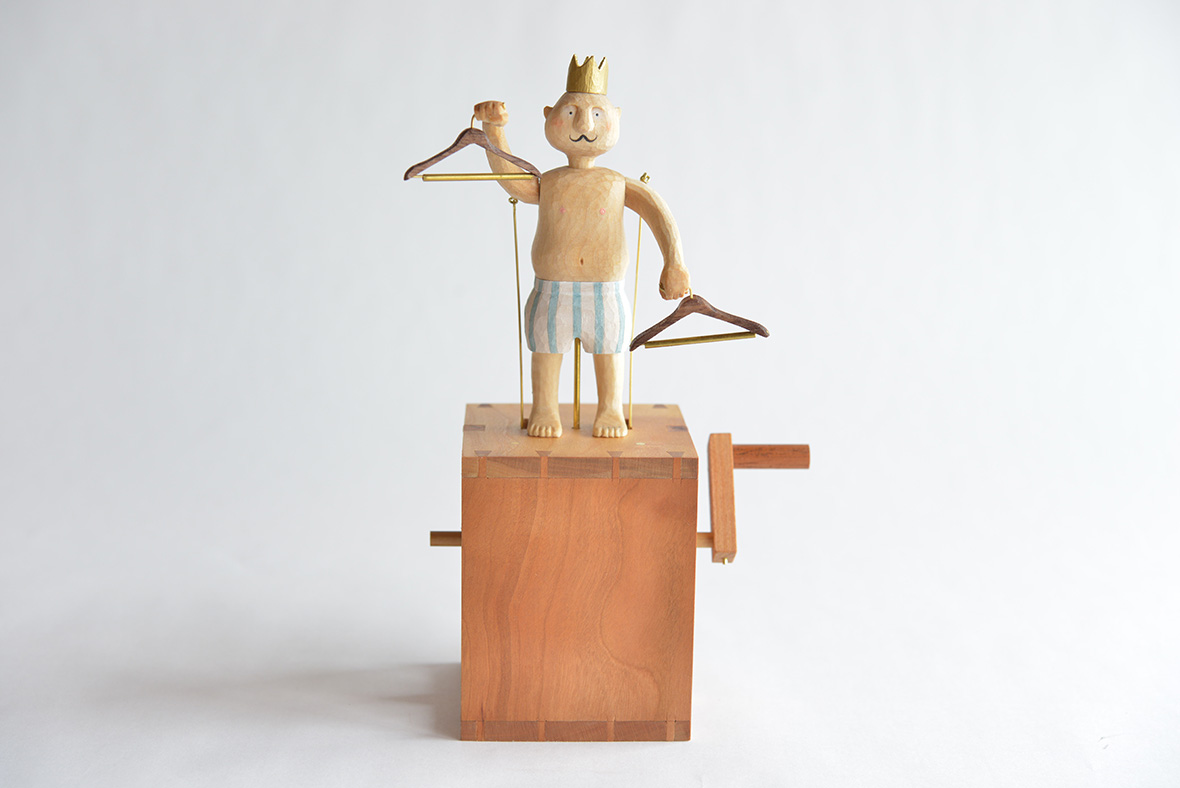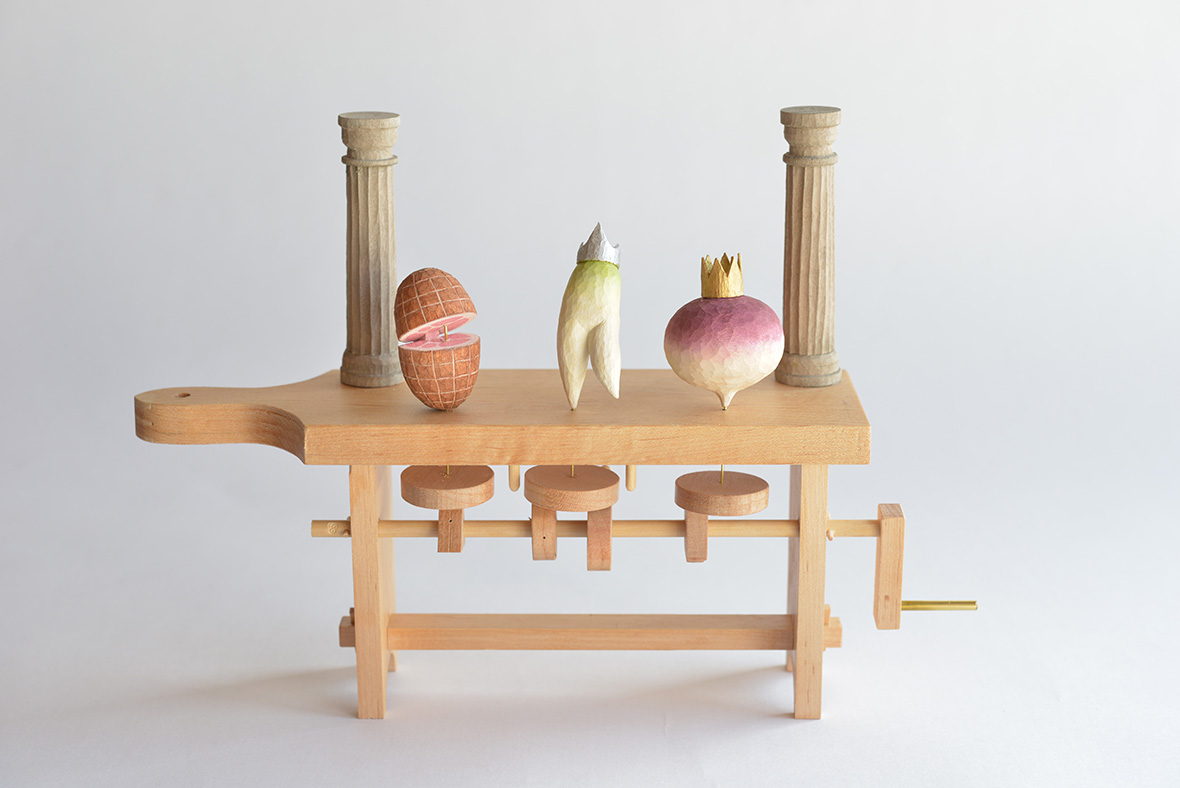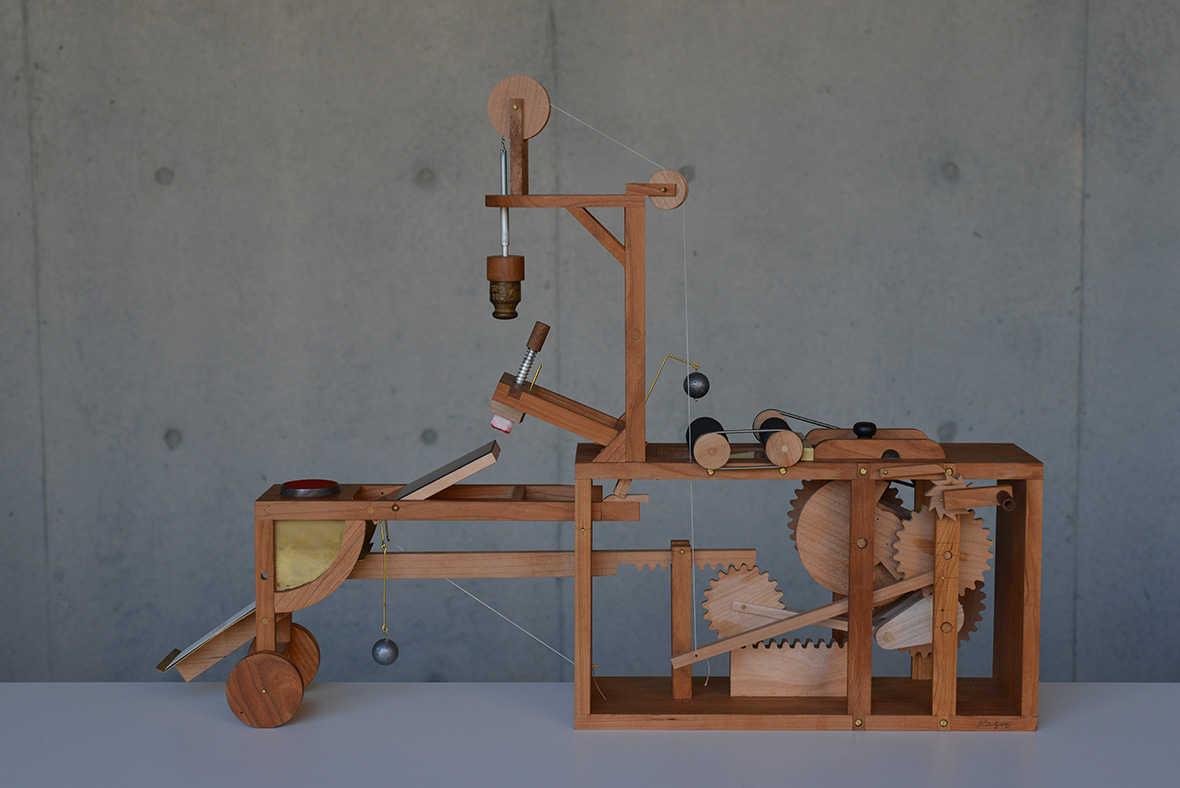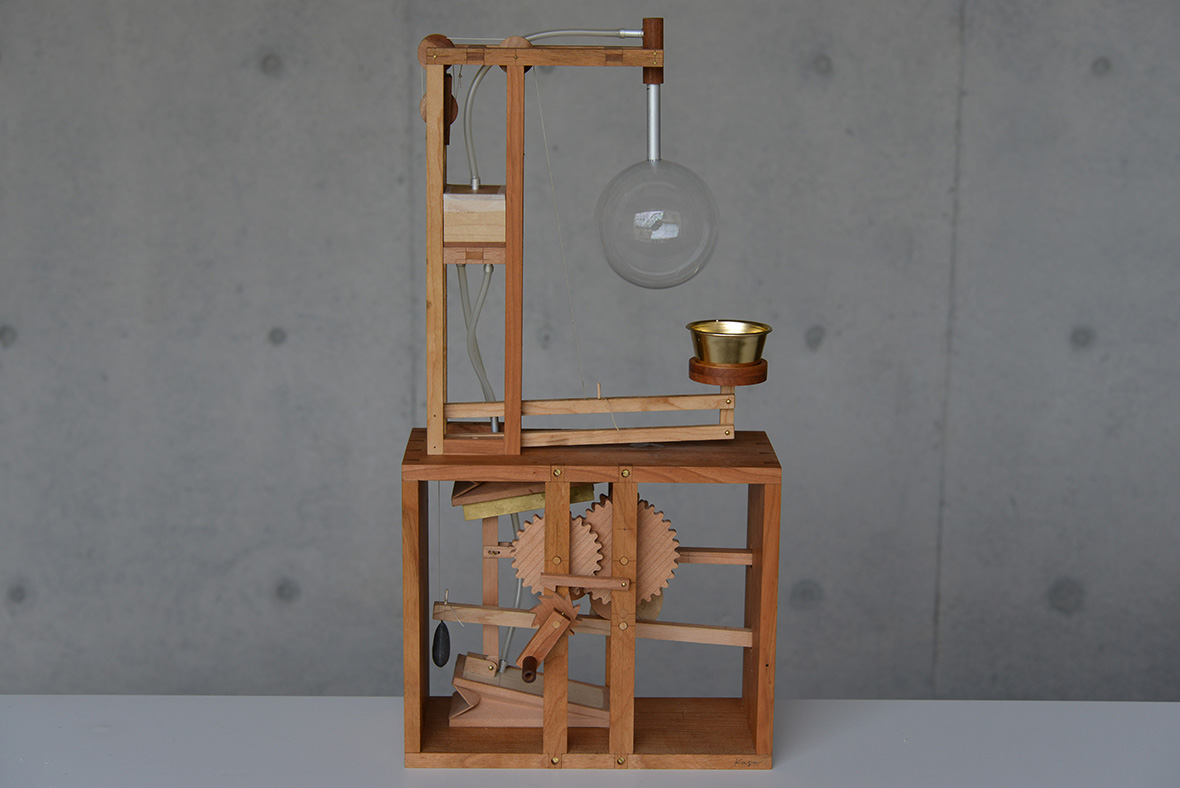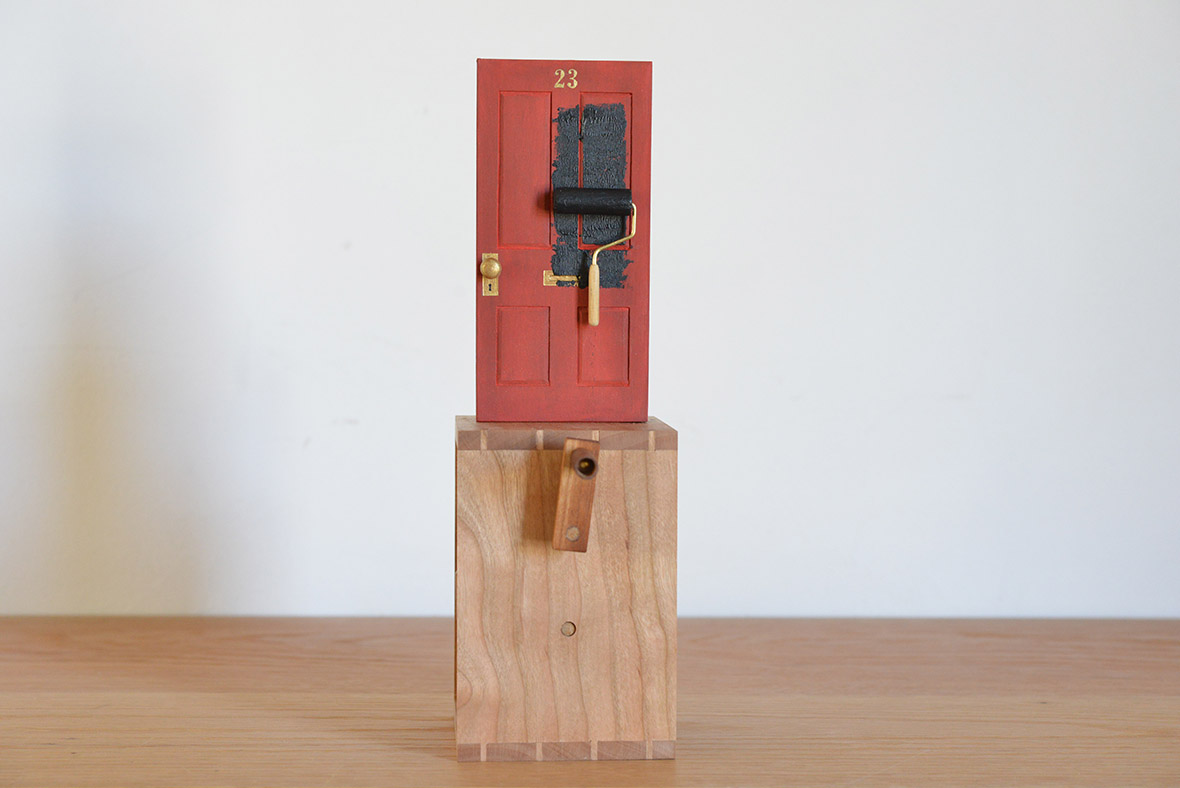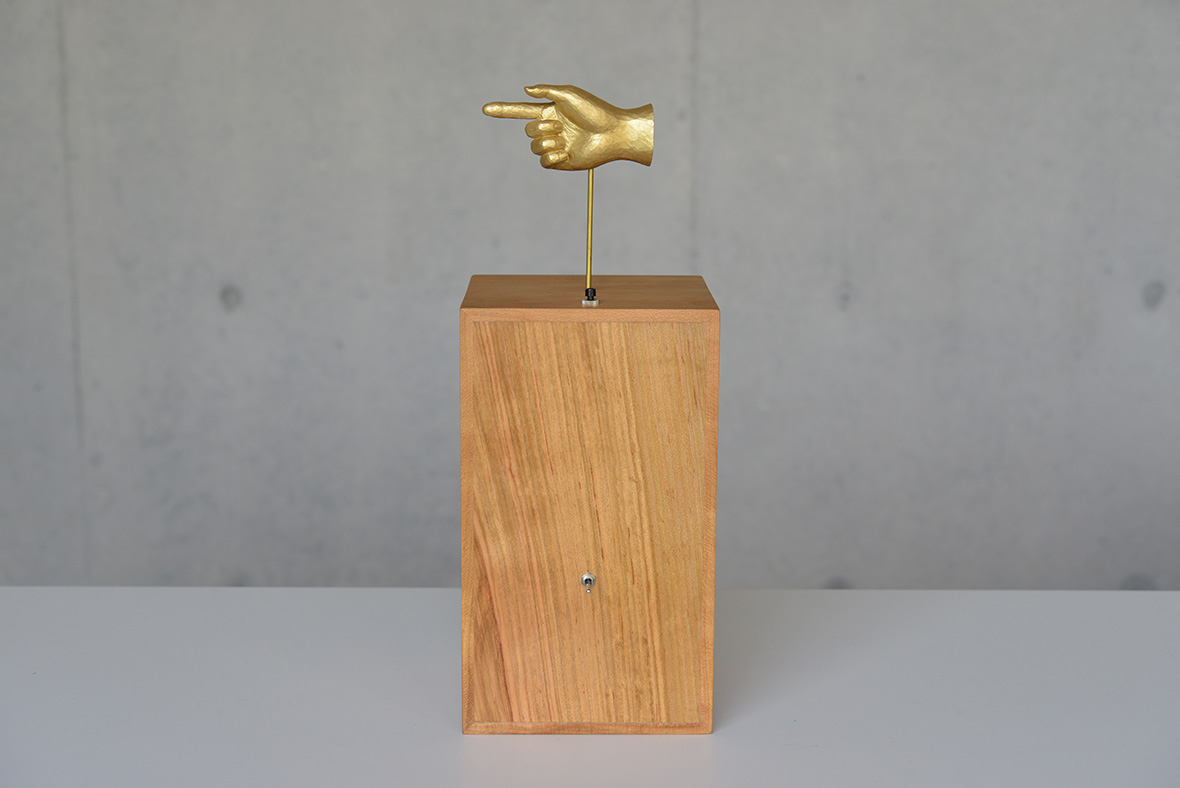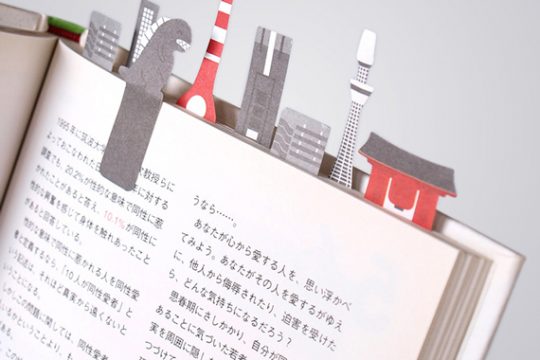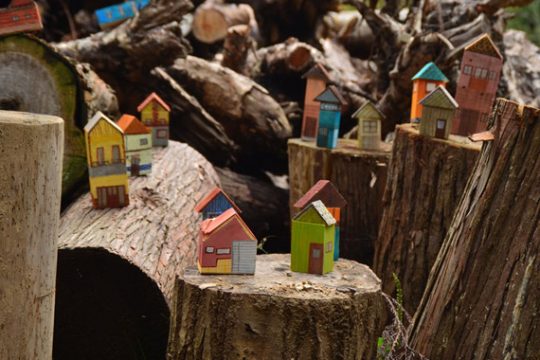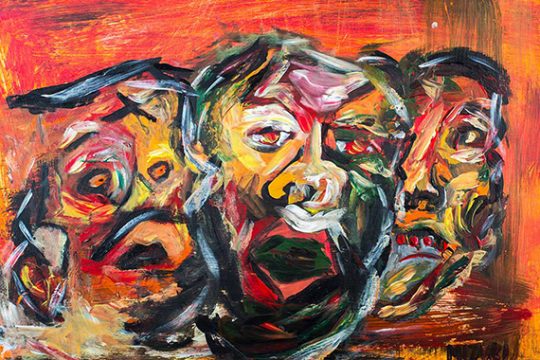
With the turn of a handle, Kazuaki Harada becomes a creator of pure delight as his wooden toy starts to come alive. In 2002, Harada became fascinated with moving toys after a friend introduced him to the book Automata: Movable Illustration, written by the late Japanese automaton artist Aquio Nishida. Thus began Harada’s transition from an ordinary print shop employee to a wooden automaton maker.
柄の回転によって、原田和明が作る木のおもちゃが生き生きと動き始める。その時彼は、喜びを生み出すクリエイターとなる。2002年、今は亡きオートマタ作家、西田明夫の著書『Automata/動くおもちゃ』を友人から紹介された原田は、たちまち動くおもちゃに魅了される。こうして原田は、平凡な印刷所の社員から木のオートマタ作家へと転身を遂げる。
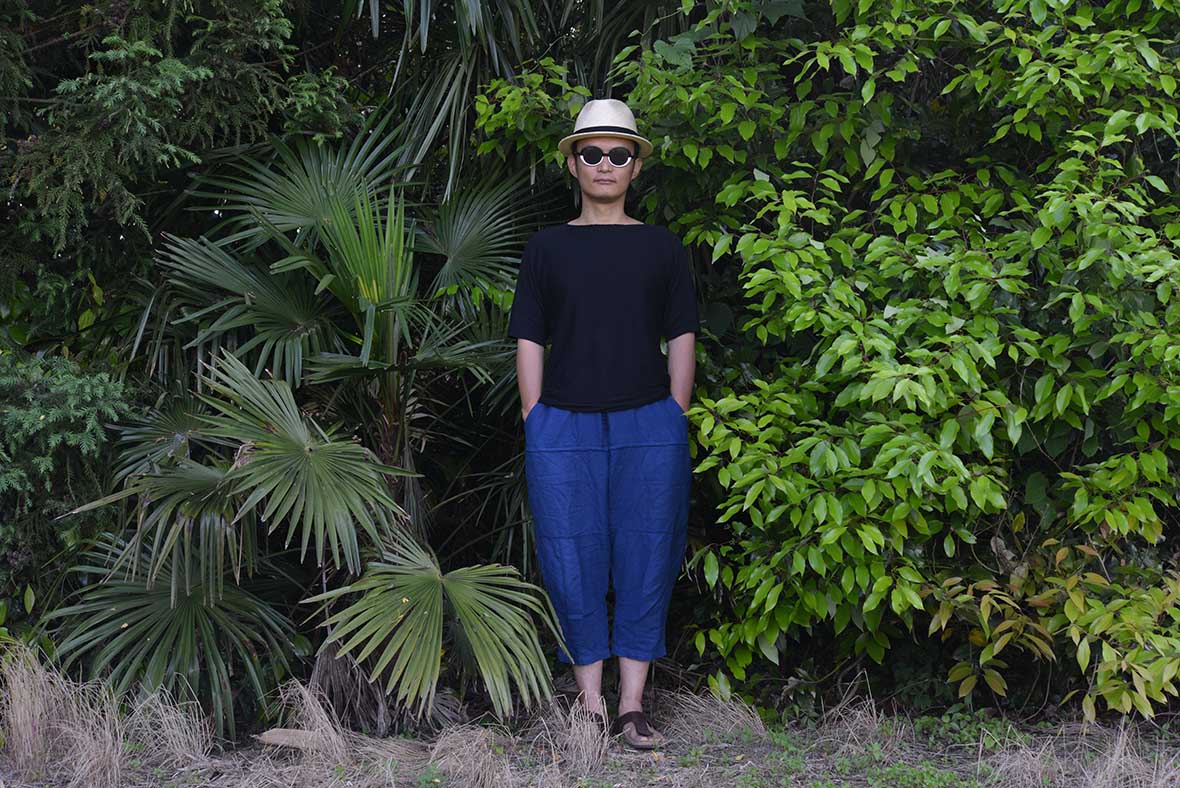
When he first started learning the craft, Harada would meticulously follow the designs and instructions laid out in Aquio Nishida’s book. Harada’s interest soon became more than just a hobby, and in 2006 he found himself in England as a part of the Contemporary Crafts graduate program at the Falmouth School of Art, while simultaneously conducting research under British automaton maker Matt Smith.
この工芸技術を学び始めた当初、原田は西田明夫の本に書かれたデザインと指導に綿密に従った。原田の関心はまもなく趣味の域を超え、2006年にはファルマス美術大学の現代工芸大学院課程で学ぶため英国に渡り、同時に英国人オートマタ作家マット・スミスのもとで研究に従事する。
无法观看?前往优酷
Upon returning to Japan in 2007, Harada settled down in Yamaguchi, a seaside city beneath the mountains that served as a peaceful location for him to delve into full-time automaton creation. In addition to establishing a wooden automaton studio, Harada regularly showcased his work at the Automaton café and exhibition space. A few years ago, Automaton would be open to the public every weekend, but these days it only opens on special occasions, allowing Harada time to focus on new creations.
2007年に帰国した原田は、山口市に居を構える。山の麓の海辺の街で、オートマタ制作に専念するのに最適なのどかな環境である。木製オートマタのアトリエを設立した原田は、ギャラリーカフェ『オートマトン』にて自身の作品を定期的に展示する。数年前までは毎週末に一般公開されていた『オートマトン』であるが、原田が新作の制作に集中するため、現在では特別な機会のみの公開となっている。
Harada’s inspiration comes from many places, such as language, music, and his wife. Each time he visualizes a new invention, he immediately starts to sketch out the design. Developed sketches turn into prototypes as Harada then begins to test the mechanics. Taking with him the lessons that he learned under Matt Smith, he pays very meticulous attention to the aesthetics of movement, as well as to the maintenance of completed automatons.
原田のインスピレーションは、言葉や音楽、そして彼の妻など、さまざまなものから湧き出てくる。新たな発明が浮かぶたび、彼は直ちにデザインのスケッチを始める。からくり構造のテストを始めると、質の高いスケッチが試作品へと形を変えていく。マット・スミスから学んだ知識を元に、動きの美しさだけでなく、完成したオートマタをいかに維持するかにも細心の注意を払う。

Many of Harada’s early designs were conceived around the theme of animals. Harada’s first completely self-designed and self-made automaton called Exercise (2006), features a pig lifting dumbbells and remains one of his favorite creations. According to Harada, it’s one thing to turn living objects into automatons, but it’s much more difficult to make inanimate objects come to life. Thus, he began to experiment with turning still-life objects into automatons.
初期の原田のデザインは動物をテーマにしたものが多い。原田がすべてのデザインと制作を手掛けた最初のオートマタ作品『Exercise』(2006年制作)は、ダンベルを持ち上げるブタを表現したもので、彼自身にとって今でもお気に入りの作品の一つである。生物をオートマタに変えることは容易いが、無生物に命を吹き込むのは至難の業だと原田は言う。こうして彼は、静物をオートマタに変える実験に取り掛かる。
无法观看?前往优酷
These days, Harada is more focused on the aesthetics of motion, with creations such as Mechanism of Love and Air Sculpture. Mechanism of Love (2014) is an automaton that imprints the Japanese character for “love” on a plain white card. Simply performing this act by hand is a mundane display, but turning it into an automated mechanism is something of a much more layered and intricate nature. This juxtaposition of simplicity and complexion gives Harada great delight, and is one reason why Mechanism of Love is among his favorite works.
現在原田は、動作の美観により一層重点を置き、『愛のからくり』や『空気の彫刻』といった作品でこれを表現している。『愛のからくり』(2014年制作)は、白い無地のカードに「愛」の文字を押印するオートマタである。単に手で行うこの行為はありふれた表示に過ぎないが、それを機械装置に置き換えることは幾層にも入り組んだ複雑な性質のものである。この簡略性と複雑性の並列が原田に大きな喜びを与え、そして、それこそが『愛のからくり』が自らの好きな作品である理由の一つである。
Harada admits that these works “don’t have much of a practical use, but like other art forms such as painting or sculpture, automatons are a way to enrich our lives and spirits, a way to open ourselves up to even greater possibility.” He says, most importantly, “I like to make people laugh, to create a sense of wonder.”
これらの作品について原田は、「実用的な用途はないが、絵画や彫刻といった他のアートがそうであるように、オートマタは我々の生活と精神を豊かにする道であり、我々自身の可能性をも大きく広げてくれる道である」と認めている。またなによりも、「私は人を笑わせ、センス・オブ・ワンダー(不思議なものや驚きに対する感覚)を生み出すことに喜びを感じる」と言う。
无法观看?前往优酷
When asked about his future plans, Harada says that he has already collaborated with musicians and artists in the past, so he wants to collaborate with electricians or programmers in the future. In doing so, he hopes to further expand the art of creating automatons.
今後の計画について聞かれると原田は、既に音楽家やアーティストとの共同制作を過去に行っており、将来は電気技師やプログラマらとのコラボレーションを実現したいと言う。それによって、彼はオートマタの美学のさらなる展開を望んでいる。
We eagerly await Kazuaki Harada’s future creations, which will surely embody his works’ three central principles: “a simple composition,” “a sense of humor,” and “something unexpected to create a sense of wonder.”
原田和明の今後の作品が待ち望まれる。そこにはきっと、彼の3つの中心的原理である「シンプルな構造」、「ユーモアのセンス」、「センス・オブ・ワンダーを生み出す何か思いがけない要素」が具象化されるはずである。

